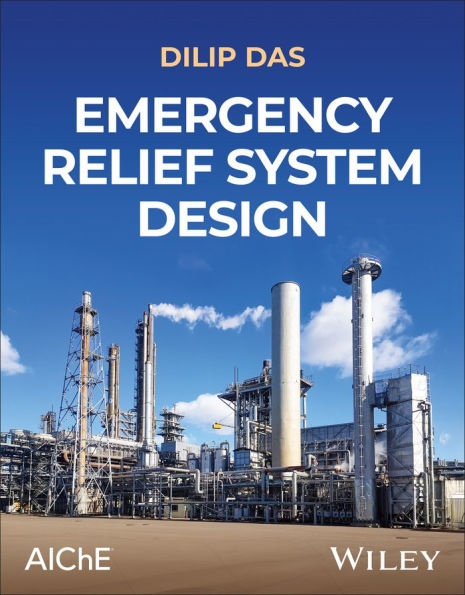Condensing over fifty years of firsthand experience in chemistry, chemical engineering, mechanical engineering, fabrication, and process safety, Emergency Relief System Design presents a coherent synthesis of collections of many pressure safety aspects for emergency relief system design.
The chapters begin with an introduction to Design Institute for Emergency Relief Systems (DIERS) technology and terminology. The book goes on to cover overpressure protection devices, Maximum Safe Operating Pressure (MAWP), piping class, inherently safer design, contingency analysis, vapor-liquid disengagement, guidelines for handling flammable materials, mechanical aspects of low-pressure tanks, reactive and thermally unstable materials, safety instrumented system, and dispersion analysis. Numerous appendices cover fundamentals of plant safety and environmental considerations that complement materials in the main chapters, as well as up-to-date detailing codes and standards.
This book also explores the history and evolution of the industry, helping readers understand not only how to protect personnel and equipment, but also why certain guidelines are in place, drawing on past examples of failure, such as at a Sonat Exploration facility which resulted in four deaths.
Emergency Relief System Design includes information on:
- Codes like ASME, federal regulations such as 40CFR68, standards such as NFPA, and guidelines like API and RAGAGEP
- Design considerations for thermoplastic popping in industrial and domestic applications
- Overpressure protection devices including flame arresters and High-Temperature Hydrogen Attacks (HTHAs)
- Ten essential contingencies, including the procedure of sizing a relief device required by a specific scenario such as a tsunami or cyber attack
- Toxicology and various formulae for determining the ground level concentration of toxicants
Emergency Relief System Design is an essential reference for many different groups of professionals, including engineers, chemists, and physicists new to the field of process safety as well as those working in production support in the fields of petrochemicals, chemicals, pharmaceuticals, and food.
Condensing over fifty years of firsthand experience in chemistry, chemical engineering, mechanical engineering, fabrication, and process safety, Emergency Relief System Design presents a coherent synthesis of collections of many pressure safety aspects for emergency relief system design.
The chapters begin with an introduction to Design Institute for Emergency Relief Systems (DIERS) technology and terminology. The book goes on to cover overpressure protection devices, Maximum Safe Operating Pressure (MAWP), piping class, inherently safer design, contingency analysis, vapor-liquid disengagement, guidelines for handling flammable materials, mechanical aspects of low-pressure tanks, reactive and thermally unstable materials, safety instrumented system, and dispersion analysis. Numerous appendices cover fundamentals of plant safety and environmental considerations that complement materials in the main chapters, as well as up-to-date detailing codes and standards.
This book also explores the history and evolution of the industry, helping readers understand not only how to protect personnel and equipment, but also why certain guidelines are in place, drawing on past examples of failure, such as at a Sonat Exploration facility which resulted in four deaths.
Emergency Relief System Design includes information on:
- Codes like ASME, federal regulations such as 40CFR68, standards such as NFPA, and guidelines like API and RAGAGEP
- Design considerations for thermoplastic popping in industrial and domestic applications
- Overpressure protection devices including flame arresters and High-Temperature Hydrogen Attacks (HTHAs)
- Ten essential contingencies, including the procedure of sizing a relief device required by a specific scenario such as a tsunami or cyber attack
- Toxicology and various formulae for determining the ground level concentration of toxicants
Emergency Relief System Design is an essential reference for many different groups of professionals, including engineers, chemists, and physicists new to the field of process safety as well as those working in production support in the fields of petrochemicals, chemicals, pharmaceuticals, and food.

Emergency Relief System Design
896
Emergency Relief System Design
896Hardcover

Product Details
| ISBN-13: | 9781394286416 |
|---|---|
| Publisher: | Wiley |
| Publication date: | 02/10/2026 |
| Pages: | 896 |
| Product dimensions: | 6.50(w) x 1.50(h) x 9.50(d) |
